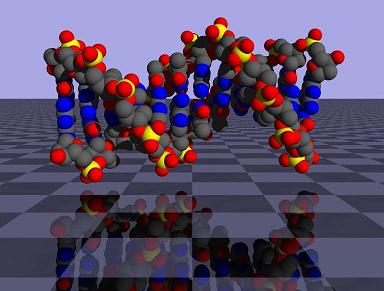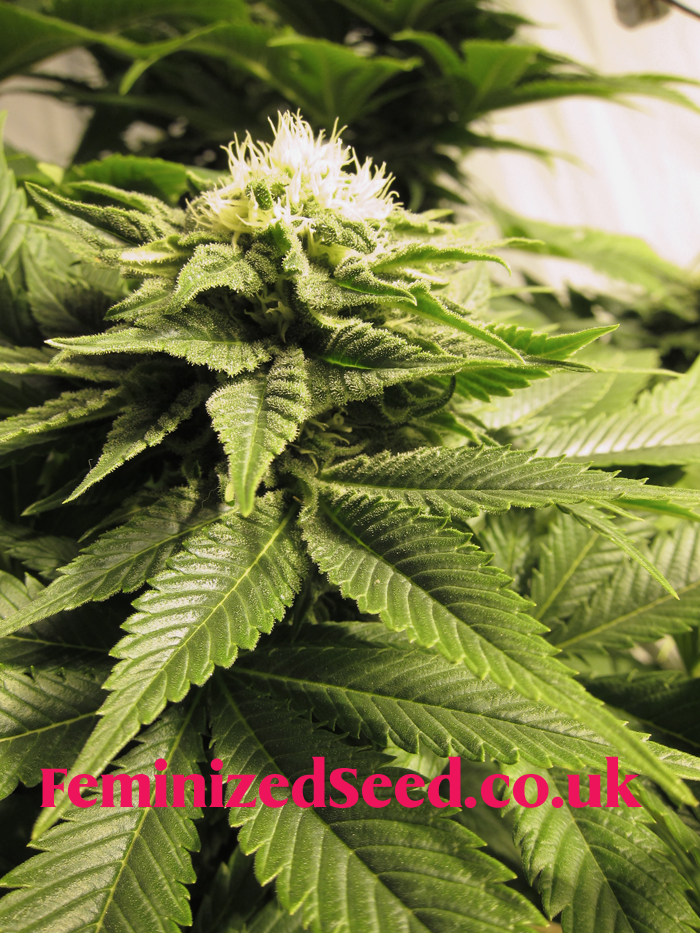|
Di seguito tutti gli interventi pubblicati sul sito, in ordine cronologico.
Acute lung injury, also known as acute respiratory distress syndrome (ARDS), is a life-threatening condition caused by acute injuries or infections of the lung.

In the latest study, published in the open-access journal PLOS One, researchers from Brazil and Germany were able to protect mice from acute lung injury by increasing levels of one of the body's own cannabinoids, 2-AG (2-Arachidonoylglycerol).
"It was concluded that MAGL inhibition, and consequently the increase in 2-AG levels, produced anti-inflammatory effects in a murine model of LPS (lipopolysaccharide) - induced ALI (acute lung injury), a finding that was considered a consequence of the activation of the CB1 and CB2 receptors."
Like cannabinoids found in marijuana, 2-AG acts on specific pathways in the body called cannabinoid receptors (CB1 and CB2). Immune cells are known to have a high concentration of these receptors.

By activating cannabinoids receptors, scientists have also been able to control overactivity of the immune system – an underlying factor in a wide range of inflammatory diseases, including acute lung injury.
Since immune cells travel via the blood stream, treatment with cannabinoids could be administered without smoking and still have effect.
The researchers conducted the experiments using a chemical named JZL184, which slows the body's breakdown of 2-AG.
While the results need to be confirmed in humans, the team concludes that targeting cannabinoid pathways of the body could be "a useful therapeutic tool for the treatment of inflammatory lung diseases."
The study received funding from Fundaçăo de Amparo à Pesquisa do Estado de Săo Paulo (FAPESP) and Cnselho Nacional de Desenvolvimento Científico e Tecnológico (CNPq)
Source: LeafScience
Studies have long shown that marijuana, THC specifically, can temporarily impair learning and memory abilities.
But researchers from Louisiana State University say they've discovered a pathway in the brain that may be responsible for marijuana's effect on memory and learning. According to Chu Chen, PhD, who led the study, disrupting this pathway may be as simple as popping a few over-the-counter painkillers.
"Our studies have solved the longtime mystery of how marijuana causes neuronal and memory impairments. The results suggest that the use of medical marijuana could be broadened if patients concurrently take a nonsteroidal anti-inflammatory drug such as ibuprofen."
Nonsteroidal anti-inflammatory drugs (NSAIDs), which include aspirin and ibuprofen, work by inhibiting the cyclooxygenase-2 (COX-2) enzyme.

In experiments with mice, published in the journal Cell, Dr. Chen and his team managed to link cognitive impairments caused by THC to an increase in COX-2 levels. But giving the mice an NSAID called Celebrex along with THC seemed to prevent these impairments.
More importantly, using models of Alzheimer's disease, the scientists confirmed that Celebrex didn't change the ability of THC to slow disease progression.
"Our results suggest that the unwanted side effects of cannabis could be eliminated or reduced, while retaining its beneficial effects, by administering a COX-2 inhibitor along with delta9-THC for the treatment of intractable medical conditions such as Alzheimer's disease."
The potential of THC to treat Alzheimer's has been the focus of a number of studies, since, as Dr. Chen notes, "there are no effective medications currently available for preventing and treating Alzheimer's disease or halting disease progression."
The study received funding from the National Institutes of Health (NIH)
Source: LeafScience
While marijuana is believed to have some effect on genes, scientists have only recently begun to investigate how it might apply to medicine.
In the latest study, published in the Journal of Biological Chemistry, researchers at the USC School of Medicine identified a specific set of microRNA (miRNA) molecules that were altered in rats dosed with THC.

miRNA play a role in regulating genes and are believed to contribute to a number of diseases. Out of 609 different miRNAs that the study looked at, 13 appeared to be significantly affected by THC, including one (mir-690) that is strongly linked to inflammatory responses.
The study was led by Prakash Nagarkatti, Ph.D and Mitzi Nagarkatti, Ph.D, who have spent more than a decade investigating the role of THC in autoimmune diseases, reports The State.
The researchers believe THC's effect on mir-690 expression is especially promising, concluding that further research could lead to new therapies for "inflammatory diseases as well as cancer."
Dr. Mitzi Nagarkatti elaborated on the findings in an interview with Counsel & Heal:
"While our study identifies the molecular mechanism of immune-altering effects of marijuana, select microRNA identified here could serve as important molecular targets to manipulate MDSC activity in cancer and inflammatory diseases."
Earlier this year (article from Nov. 2013 - N. Red. TurismoAssociati.it), a group from Italy obtained promising results with three other chemicals in marijuana – cannabidiol (CBD), cannabigerol (CBG) and cannabidivarin (CBV) – in reducing harmful genetic activity related to a variety of skin disorders, including cancer.
The Italian group also concluded that marijuana's gene-modifying potential may "extend well-beyond skin disorders" to diseases like multiple sclerosis and other forms of cancer.
The study received funding from the National Institutes of Health (NIH)
Source: LeafScience
Besides easing insomnia, marijuana seems to have a wide range of effects on sleep.
This is because chemicals in marijuana, known as cannabinoids, actually mimic the activity of chemicals found naturally in the brain.

These chemicals and their biological pathways make up the body's endocannabinoid system, which is responsible for regulating sleep, among other things.
Likewise, research shows that marijuana can also have a direct impact on sleep. Here's 5 of the most important effects that studies have identified so far.
1. Easier Falling Asleep
Some of the earliest research on marijuana and sleep shows that marijuana's main ingredient, THC, can significantly reduce the time it takes for both insomniacs and healthy people to fall asleep.
In a small study published in 1973, THC reduced the time it took for 9 subjects with insomnia to fall asleep by over an hour on average. However, the researchers noted that too high of a dose could counteract the effect.
THC was also found to ease falling asleep in a 2013 study involving healthy subjects.
2. Longer Sleep
Early studies also revealed that taking either THC or CBD before bed could lead to an increase in overall sleep. In one study, increasing the dose of THC also increased the amount of time spent sleeping.
However, higher doses of THC also caused a "hang over" feeling in some subjects when they woke up, while the feeling was not present at lower doses.
3. More Deep Sleep
Some of the more interesting effects of marijuana on sleep involve its impact on the sleep cycle. Studies show that THC can increase the amount of slow-wave sleep, also known as deep sleep, that an user experiences during their slumber.
This is likely a good thing, since deep sleep is believed to play a major role in the restoration process that occurs during sleep.
What's more, experts believe that the most damaging effects of sleep deprivation result from a lack of slow-wave sleep. For example, research has shown that reduced slow-wave sleep can be a strong predictor of high blood pressure in older men.
4. Shorter REM Sleep
Another way marijuana affects the sleep cycle is a reduction in REM sleep. Many people who smoke before bed report a lack of dreaming, which only occurs during REM sleep.
While less REM sleep could be seen as a negative effect of marijuana use, scientists are still not sure what purpose REM sleep actually serves.
However, people who quit after using marijuana on a frequent basis often experience an increase in REM sleep, also known as the "REM rebound" effect, which is accompanied by an increase in dreaming and restlessness during sleep. But this effect tends to wear off within days or weeks, depending on the individual.
5. Better Breathing
When it comes to medical use, marijuana could offer an incredible benefit to the approximately 25% of men and 9% of women who suffer from a disorder called sleep apnea.
Sleep apnea is characterized by disrupted breathing during sleep, and has been linked to a number of serious conditions, including diabetes and heart problems. Unfortunately, the vast majority of sleep apnea sufferers remain undiagnosed and untreated.
Even of those who seek treatment, many eventually give up on wearing a CPAP mask every night.
But that's where marijuana may help, as researchers are currently trialing THC as an alternative, with early results already showing promise. If clinical trials are successful, sleep apnea patients may one day have the option of swapping a bulky sleep mask for popping a few pills before bed.
Source: LeafScience
Obiectul:
O solutie europeană pentru o problemă europeană: legalizarea canabisului. Organizatia ECI Weed are ca scop adoptarea unei politici comune in Uniunea Europeană, privind controlul si reglementarea productiei de canabis, utilizarea si vânzarea.

Obiectivele principale:
În prezent, există o hartă juridic eterogenă în ceea ce priveste politica canabisului în UE. Problema de coerentă si de discriminare merita cercetata. O politică comună privind controlul si reglementarea productiei de canabis, utilizarea si vânzarea lui, va ajuta la: (a) să asigure egalitatea în fata legii si a non-discriminării tuturor cetătenilor UE, (b) a proteja consumatorii si de a monitoriza precum si pentru a testa in laborator efectele asupra sănătătii; (c) punem punct traficului de canabis. Haideti să imbratisam legalizarea canabisului si armonizarea legislatiilor nationale disponibile in tarile europene. Ilegalizarea plantei a avut loc in anii 1930, avand efecte dezastruase asupra populatiei.
Faceti clic aici pentru a sustine această initiativă
Numărul de înregistrare atribuit de Comisia Europeană:
ECI(2013)000008
Data înregistrării:
20/11/2013
Adresa de internet a propunerii de initiativă cetătenească în registrul Comisiei Europene:
http://ec.europa.eu/citizens-initiative/public/initiatives/ongoing/details/2013/000008/en
Numele persoanelor de contact înregistrate:
FESEFELDT Bendix, BALAS Pierre
Adresele de e-mail ale persoanelor de contact înregistrate:
bendix.fesefeldt@sciencespo.fr, pierre.balas@sciencespo.fr
Numele celorlalti organizatori înregistrati:
TOJA DE LA MUELA Delia, VERDAM Pieter David, VAN BERWAER Gaelle, TARDELL Miriam, LORIMER Marta
Pagina de internet a initiativei cetătenesti (dacă există):
http://weedliketotalk.wix.com/wltt
Faceti clic aici pentru a sustine aceasta initiativa
Pentru a sustine o initiativă cetătenească europeană trebuie să fiti cetătean al UE (să fiti originar dintr-un stat membru al UE) si să aveti vârsta la care să puteti vota la alegerile pentru Parlamentul European (18 ani în toate tările cu exceptia Austriei, unde vârsta minimă este de 16 ani).
Mai multe informatii privind regulile si conditiile referitoare la initiativa cetătenească europeană: http://ec.europa.eu/citizens-initiative
HEMP vs. COTTON

Hemp fabric is softer, warmer, more water resistant and more durable.
One acre of usable hemp fiber is equal to two acres of cotton.
Hemp requires no pesticides, but cotton requires high amounts of pesticides.
Growing cotton leaves a scorched earth and polluted waters.
Organic alternatives have a lighter impact, but ultimately organic cotton is not nearly as sustainable as hemp.

Clearing the Smoke, reveals how cannabis acts on the brain and in the body to treat nausea, pain, epilepsy and potentially even cancer.
Tourism in Colorado Boosted with Legalization of Marijuana
Since January 1, 2014 marijuana use was legalized in Colorado along with Washington. All the Cannabis supporters were happy with the state’s decision to legalize recreational marijuana. Marijuana business is just booming and companies already fear shortage. After this new legislation in Colorado, the increasing touristic affluence has greatly benefitted the private companies, majorly because of those people who look forward to participating in various activities involving recreational uses of marijuana. “I think it is a great idea, showing people around, showing people the different programs, showing them the different types of weed, showing them the different areas,” said cannabis tourist Debbie Grossett. Companies have included cannabis as a main subject while offering tourist packages, which involve cannabis cooking classes as well. Chefs demonstrate different ways of cooking by using cannabis in various dishes. For vacationers looking for an alternative relaxing vacation with joints rather than a beach vacation, Colorado is surely the place to go.

The Green Tours!
Tourists are also given the opportunity to explore marijuana fields, events, and parties that provide insights into the consumption and use of marijuana. These tours are famous by the term “green tours” and gaining popularity and acceptance from people who are curious to get information on cannabis. The tourist information desk at the Denver International Airport offers a list of around 20 facilities where marijuana selling and buying is legal. There are “bus ferries”, which take tourists for a tour of three marijuana dispensaries for about $399, excluding the cost of marijuana that they may buy over and above that!
Limitation on Possessing Marijuana
There is lot of leeway for the citizens of Colorado towards pot culture. One ounce per visit could be bought by the adults (21 years and older), and they can smoke it in privacy at their homes. However, visitors have restrictive access to marijuana. There are several federal and state laws which limit the tourists to buy a quarter ounce only, while there are consumption restrictions as well.
No Smoking Zones
The “No Smoking” zones include forests, Ski Mountains, historic sites, trails, national parks, and federal land. Hotels, restaurants, entertainment venues, and bars are covered by Clean Indoor Act, and these would also come under no smoking permission, including outdoor public spaces. Marijuana dispensaries have clearly put up instructions about the dos and don’ts related to the use of marijuana on their premises. Leftovers cannot be taken home. Tony Verzura, the co-founder of RiverRock dispensary in Denver stated, “You need to come educated about local laws and be prepared to ensure complete compliance, and avoid unnecessary trouble.” Though the current marijuana tourism revenues are impressive, its fortune may or may not be favorable. Of course, it has America’s first marijuana recreational shops , but Washington will soon follow the same this year.
Source: Cannabis News Network
In astronomia, si definiscono equinozi (dal latino "equi nox" cioè "notte uguale" al dì) i due istanti nel corso dell'anno in cui il Sole si presenta all'intersezione tra l'eclittica e l'equatore celeste, ovvero quando il Sole si trova perpendicolare all'equatore e la separazione tra zona illuminata e zona in ombra della Terra passa per i poli.

Nell'arco dell'anno si hanno due equinozi, uno a marzo, a partire dal quale le ore di luce aumenteranno fino al Solstizio d'Estate, e uno a settembre, a partire dal quale le ore di luce diminuiranno progressivamente fino al Solstizio d'Inverno. Nell'emisfero settentrionale, l'equinozio di marzo è l'equinozio di primavera, e l'equinozio di settembre quello d'autunno, mentre nell'emisfero meridionale questi termini risultano invertiti. Ma attenzione, contrariamente a quanto comunemente si pensi, l'istante nel quale il Sole passa attraverso ogni punto di equinozio può essere calcolato accuratamente, così che l'equinozio è sempre e solo un particolare istante, e non un giorno intero. Il punto dell'equinozio di primavera dell'emisfero settentrionale è anche chiamato punto vernale, punto dell'Ariete o punto gamma, mentre quello dell'equinozio d'autunno è anche chiamato punto della Bilancia.
Con l'equinozio di marzo, come tutti sappiamo, finisce l'inverno e ha inizio la primavera e la durata del giorno sarà maggiore di quella della notte, ma se in passato la data era fissata al 21 marzo (Concilio di Nicea del 325 d.C.), in epoca moderna l'inizio della bella stagione non avviene più in un giorno prefissato, bensì si tiene conto dell'equinozio astronomico, che varia a seconda di diversi fattori. Per questo motivo, a partire dalle prime scoperte astronomiche del XVI secolo, l'equinozio primaverile cade in una data compresa tra il 19 e il 21 marzo. Per esempio, alla fine del XVIII secolo, per cinque volte consecutive è caduto il 19 marzo, evento che si verificherà di nuovo solo nel 2044, mentre nel XXI secolo l'equinozio di primavera è coinciso con la data del 21 marzo solo nel 2003 e nel 2007 e la cosa non si ripeterà più fino al 2102.
Siamo entrati nel periodo della resurrezione, quando la natura, nell'eterno ciclo di morte e rinascita, torna a nuova vita dopo i lunghi mesi invernali. Un fenomeno che non riguarda solo il mondo vegetale poiché l'equinozio rappresenta un momento di rigenerazione e di risveglio sia naturale che spirituale. E' questo il momento dello schiudersi del seme nella terra, la rinascita di Persefone che dalle profondità della terra e dal gelo invernale genera una nuova vita, nonché l'inizio di un nuovo ciclo di spinta verso la vita, come il seme che sta per diventare fiore: un momento propizio per attuare le riflessioni maturate durate il letargico inverno e far pulizia fuori e dentro di noi, il momento per rinnovare pensieri, sogni e aspirazioni. Il nostro inconscio, ora più che mai, si rivelerà terreno fertile per farli crescere e dare i loro frutti.
Fonte: Leonardo
A foodie “gastro-guide” who was profiled last year for his popular food tours of Seattle that he personalizes, Bryce Lathrop from the White Mustache Urban Adventures is all set to add on to his set of specialized events, “high-end all-inclusive marijuana adventure”.

First Tour Slated on April 2, 2014
The first tour is said to take place on 2th of April. Lathrop is organizing the event to be a multi-day one which will include classes for cooking savory items as well as sweet items using marijuana along with a “behind the scenes access to dispensaries, head shops, and grow facilities,” that carries a promise of eating of loads of goodies and food in a “legal and responsible” way. Just as his other food tours, Lathrop and his other guides will be driving the participants of the tours themselves like always between the stops. Lathrop adds with great gusto -“There is zero reason for these people to have to drive or do anything; I’m tucking them in at the hotel at the end of the evening.” The drive to the hotel will be after a stop for a late night snack in a place like Dick’s Drive-in or even Loretta’s North Western in South Park. The total cost of the multi-day tours which includes about 3 nights in a, what Lathrop calls “5-star Seattle downtown hotel,” is $1420.
Legalization of Weed in Seattle Has Brought a Radical Change

Ever since marijuana was legalized in the Seattle, Lathrop reveals that he has been contacted by several potential pot tour takers; his tour business covers places like Vancouver and Portland. He is known to conduct a number of themed and specialized events like a tour he calls “Musical plates” that is a perfect combination of live music and food. When he was initially suggested to do pot tours, he turned it down. But one fine day, a client pointed out how extremely successful such ventures have been in Denver (where pots are legalized), he decided to give it a shot. Since a lot of food tours happen in the evenings, he decided the pot tour could help get his licensed limousine company engaged during off hours. He said,“Denver is really trying to pitch itself as the New Amsterdam, so I’m sure Seattle’s going to do it too. I just really wanted to be the first.” While he has been advertising this tour to travellers, many citizens of Seattle have requested him on his Facebook page to do scaled-down versions of this tour that is specialized for Seattleites.
Source: Feminizedseeds
There are many reasons why people smoke marijuana. Some do it recreationally, some for medical purposes, and even some who consider it a part of their religion or spirituality.
In ancient times, cannabis was used in India by Hindu saints. Herodotus, an ancient Greek historian, wrote about its use in ceremonial practices by the Scythians, who were an Iranian tribe known for their use of horses.
In more recent times, the Rastafari movement that began in Jamaica promotes the spiritual use of marijuana. They use it as a way to worship their messiah, Haile Selassie, and as an aid to meditation. Rastafaris believe cannabis was the tree of life as described in the book of Genesis. Its use is sacramental and deeply religious, and it is believed smoking brings one closer to God. However, it is not necessary to smoke marijuana to be a Rastafari.

The Rastafari are not the only ones who hold this view of marijuana. In the year 2000 Roger Christie founded what is now known as the THC Ministry. In this religion, cannabis is considered to be a sacrament, not unlike communion. Members practice their religion with an emphasis on cannabis' healing and enlightening properties.
The cornerstone of the THC Ministry's belief is that the cultivation and use of marijuana is a human right provided by God and protected by the constitution. They believe cannabis was the original sacrament of almost every major world religion, and that the plant has the ability to satisfy our every desire.
The church's mission involves promoting use of the hemp plant and opening people's eyes to its benefits, and it is active in the legal and social issues surrounding its use in the Unites States. However, they ran into trouble with the law in 2010, when the founder and a few others associated with the ministry were accused of marijuana possession and trafficking. Since then, Christie has been in and out of court defending his beliefs.
Religions like Rastafari and the THC Ministry fall under an umbrella term called Cantheism. This is a modern term used for religions who base their beliefs on how awesome the cannabis plant is, while neither endorsing or condemning other religions or faiths that do not agree. Adherents to these religions can be known as cantheists, or cannabists. A treatise describing all the beliefs associated with Cantheism can be found here.
My favorite part about Cantheism is how seriously it approaches the matter. For example, the very first creed states: "I believe that Cannabis sativa is the useful cane and the true hemp." Part of the Cantheist code also states that followers "will share (their) faith, but not be obnoxious about it." In this kind of situation, I think it's important that religions centered around marijuana appear serious and professional, lest they be judged as a religion of pot heads.
Other churches, like the Universal Life Church, are welcoming to people who would consider themselves cantheists. Those who feel strongly about such matters and want to take it to the next level can even get ordained for free. The only requirement is that one's beliefs and practices may not discriminate or infringe on the rights of others.
While I personally have a more conservative approach, and would disagree with the notion of uniting cannabis and religion or spirituality, I understand why some choose to follow this path. Those who do should take it seriously, though, because faith and spirituality are serious things. With the way things are changing in the United States regarding marijuana laws, it seems logical to assume Cantheism will become more prevalent.
Source: weedist
|